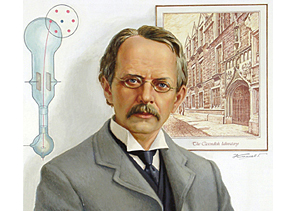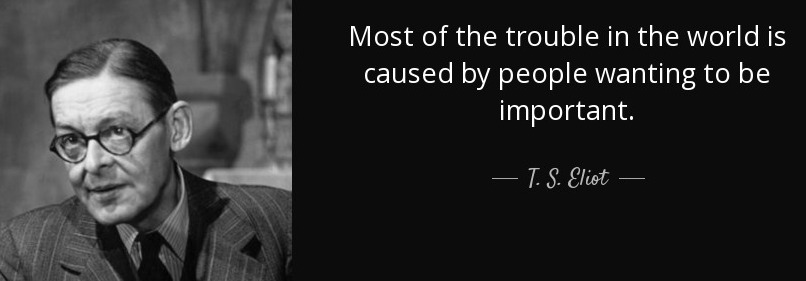|
home | what's new | other sites | contact | about |
||||
|
Word Gems exploring self-realization, sacred personhood, and full humanity
Quantum Mechanics
return to "Quantum Mechanics" main-page
Joseph John "J.J." Thompson (1856 - 1940)
‘coming in strollers’ to university Born to a middle-class family, and at the tender age of 14 (1870), with the aid of scholarships, Thompson applied for entrance to Owens College (later, the Victoria University of Manchester, England). In his autobiography, he recounts that the college administration considered it a “scandal” that somehow such a young person had slipped through the admissions process. University authorities promptly passed by-laws prohibiting freshmen students “coming in strollers.” Cavendish on a lark In 1884, when he was only 28, Thompson applied for the chief position of the prestigious Cavendish Research Institute (of the Department of Physics at the University of Cambridge). He didn’t expect to win the appointment and put forward his name as a lark; however, to his great surprise, he was accepted. Suddenly Thompson found himself with the world’s best scientific resources at his disposal allowing him to investigate whatever he pleased. Thompson exhibited an uncanny ability to bring out the best in his students Look at this photo - Thompson's students, including his own son, who would later win a Nobel Prize!!
JJ Thompson's famous cathode ray tube experiment: What is a cathode tube? Think of a sealed glass bottle.
The bottle, or the tube, needs to be sealed because a vacuum pump will be attached to the tube to pump out the air. What does 'cathode' mean? "Cathode" is from a Greek word ("kata") meaning "down" or "on its way down." Wikipedia: The word was coined in 1834 from the Greek κ?θοδος (kathodos), 'descent' or 'way down', by William Whewell, who had been consulted by Michael Faraday over some new names needed to complete a paper on the recently discovered process of electrolysis. In that paper Faraday explained that when an electrolytic cell is oriented so that electric current traverses the "decomposing body" (electrolyte) in a direction "from East to West, or, which will strengthen this help to the memory, that in which the sun appears to move", the cathode is where the current leaves the electrolyte, on the West side: "kata downwards, `odos a way ; the way which the sun sets". The use of 'West' to mean the 'out' direction (actually 'out' → 'West' → 'sunset' → 'down', i.e. 'out of view') may appear unnecessarily contrived... cathode, from the Greek kathodos, 'way down', 'the way (down) into the cell (or other device) for electrons'. Yes, the term “cathode” may be “unnecessarily contrived” and convoluted, but the general idea relates to the direction of electrical current, a seemingly natural direction, just as the sun appears to move predictably across the sky from east to west, on its “way down” toward the horizon at eventide. That said, this term needs some make-over.
How did the experiment work? The air was pumped out of the tube. Two pieces of metal were placed in the tube (see on the left of the tube). The metal on the far left was the "cathode," which would be negatively charged.
Thompson connected the two pieces of metal to a power source.
When he did, a ray, a beam of light, shot across the tube, originating from the cathode, and hit the far right side of the tube which was specially coated for detection, a fluorescent screen. What was happening? At this stage of the experiment, Thompson did not yet understand what was happening. In fact, electrons were streaming out of the negatively-charged cathode (on the far left) and were attracted to the nearby piece of metal, the positively-charged anode. However, the electrons were shooting so fast that they shot right by the anode and hit the far-right end of the tube.
Thompson asks the question, what is the ray made of? Whatever the ray is made of, he wants to know if it has an electrical charge. He creates an additional experiment to see what the ray will do when exposed to an electric current or to magnetic forces.
Thompson positions two metal plates on either side of the tube, then runs an electric current through them. In our example here, the top plate has a “plus” or positive charge, and the bottom plate has a “minus” or negative charge. See what happens now to the cathode ray.
Now the cathode ray bends upward, toward the positively-charged plate. Thompson knows that opposite electrical charges attract, and so, based on these findings, he reasons that the cathode ray is made of something that’s negatively charged because it’s attracted to the positively-charge plate. However, Thompson seeks for confirmation. He then surrounds the tube with a magnet. Without going into the details, he understood that, if the cathode ray were, indeed, negatively charged, the ray would react in a particular way to the magnetic forces. What he theorized, in fact, occurred, and now he had two major points of evidence pointing toward a negatively-charged cathode ray. Thompson’s experiment suggested to him that, not only is the cathode ray composed of a negatively-charged essence but that, it’s also extremely small. From the data obtained from his experiment, plus other information at his disposal concerning what was known at the time, Thompson was led to perceive that the negatively-charged “stuff” of the cathode ray, in round figures, was 1000 times smaller than the smallest atom, hydrogen. Later, it was more accurately determined to be 1800 times. This tiny essence of matter would come to be called the “electron.”
Editor’s note: The word "electron" was coined in 1891 by G. Johnstone Stoney in his studies of electrical charge. It was George Francis Fitzgerald, however, in 1897 who put forward the idea that “electron” be specifically applied to what Thomson had discovered.
|
||||
|
|


